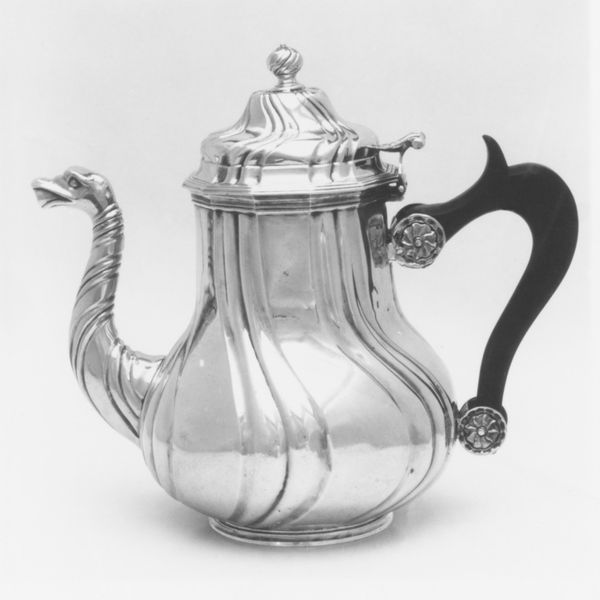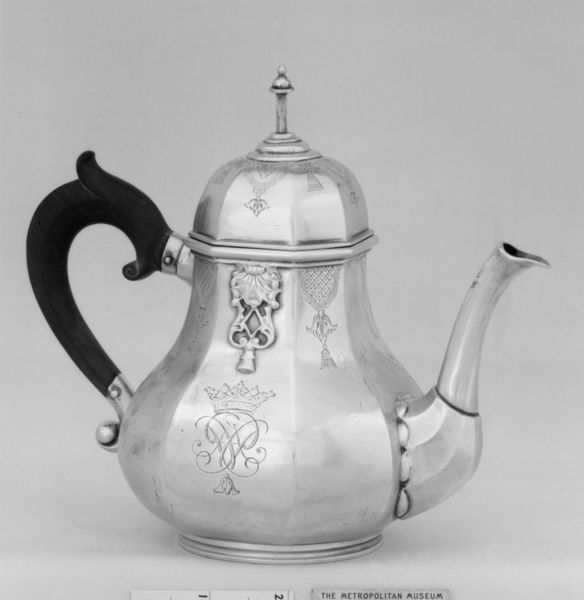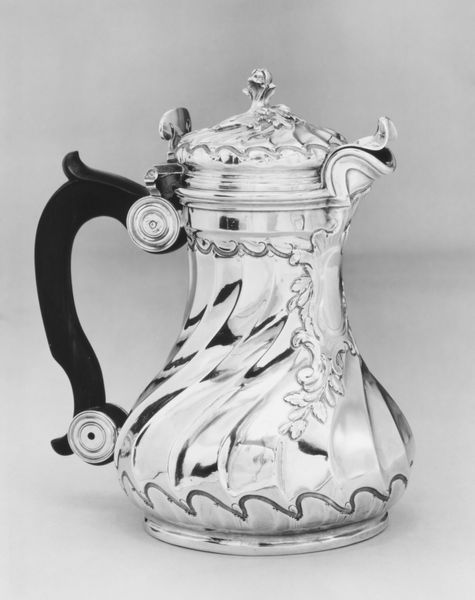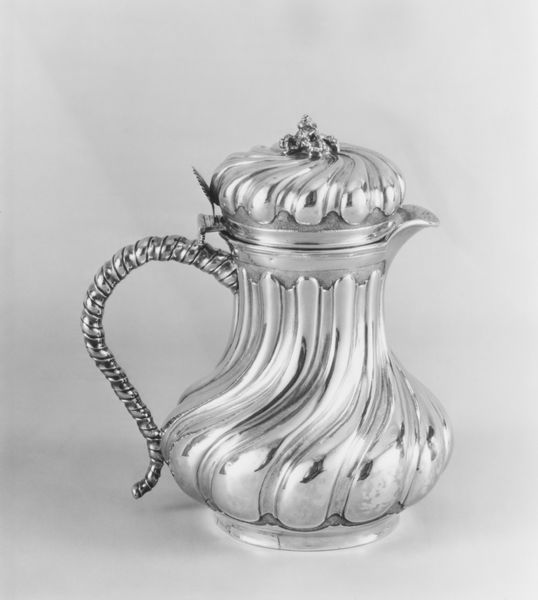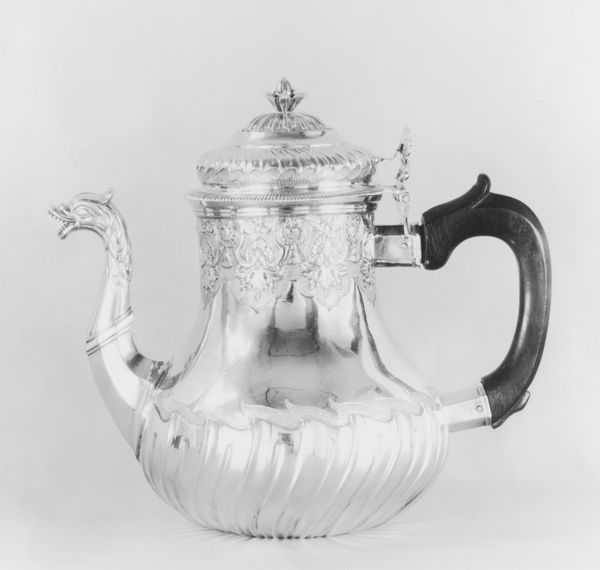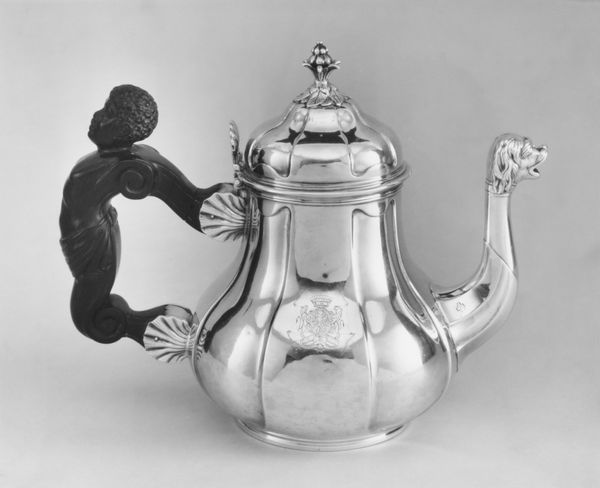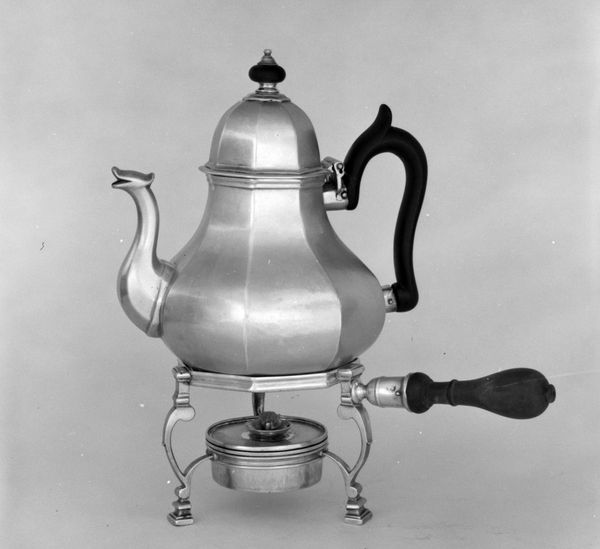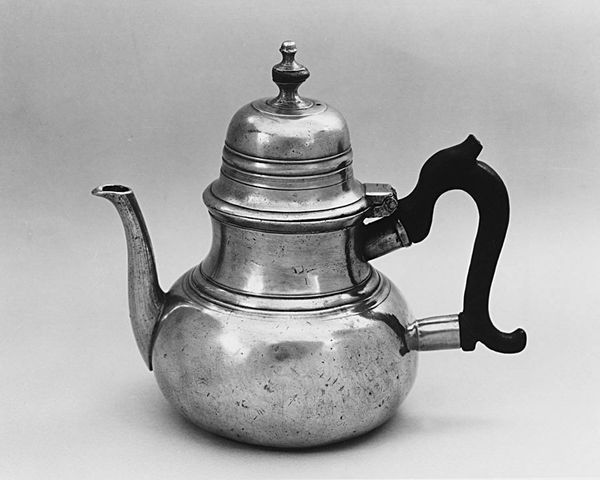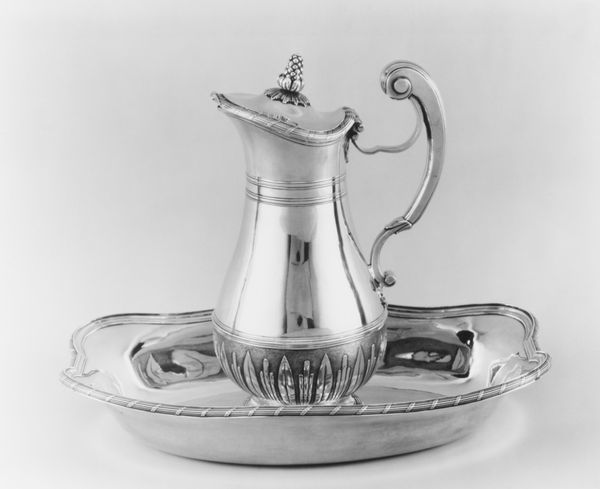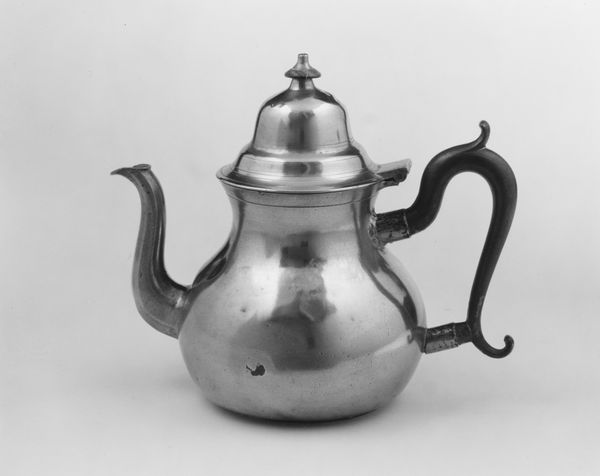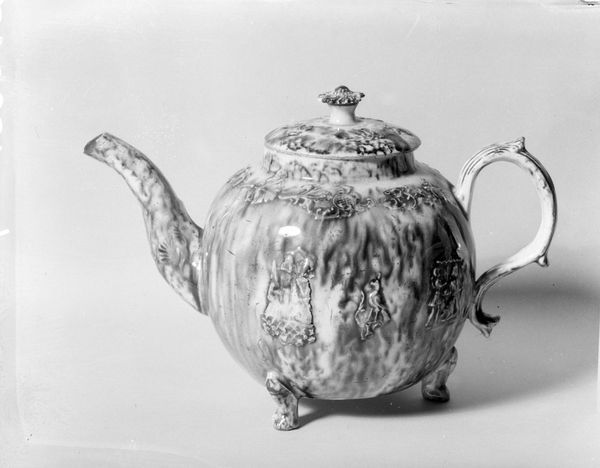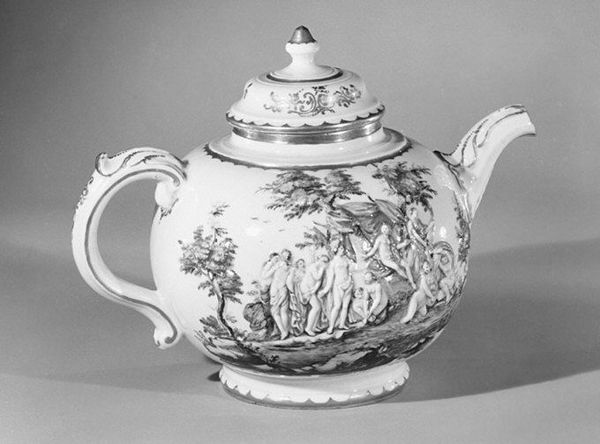
silver, metal, sculpture
#
silver
#
metal
#
sculpture
#
rococo
Dimensions: Height: 8 3/16 in. (20.8 cm)
Copyright: Public Domain
Curator: What strikes you first about this teapot? Editor: A severe elegance! Its silvery surface has a reflective quality, while the ebony handle provides stark contrast. A powerful statement, really. Curator: Indeed. This "Teapot" was crafted in Paris in 1752 by Barthélemy Decourchelle. As a silversmith working during the Rococo period, he skillfully manipulated materials, such as silver and what looks like possibly ebony for the handle, achieving not just functionality but refined status. Editor: Notice the spout fashioned like the head of a fantastic bird; its curved neck echoes mythical narratives. The silver itself amplifies the power associated with precious materials, subtly reinforcing status through classical tropes. Curator: Absolutely. The chasing technique evident in the fluted body required specialized skill. Beyond mere consumption, tea culture in the 18th century involved complex global exchange, shaped by exploitative colonial labor to satiate upper-class habits. Objects such as this became markers of elevated position, necessitating specialized labor and conspicuous consumption. Editor: Consider then the layers of symbol: The ebony handle representing exotic locales and the body, reflecting social customs. Does the owner simply sip tea? Or consume class privilege made tangible through elaborate objects? Each element whispers stories that have accumulated over centuries. Curator: Perhaps we are now simply left to contemplate that, thanks to such refined crafting, the act of tea-drinking may, or may not, hold greater social importance than just the ritual, elevated and enhanced. Editor: Yes, the power of symbols—encoded in materials and shapes—outlasts eras, inviting continued decipherment across time. The silversmith's labour is more than merely making an item, it is to provoke thought across the ages.
Comments
No comments
Be the first to comment and join the conversation on the ultimate creative platform.
